Project planning
Here you will find all the documentation and tools you need to easily prescribe and integrate Enduce E1 in your project - from product data and instructions to templates, certificates and environmental declarations.
For further guidance, please visit our FAQ with frequently asked questions and answers. Do you have specific needs or questions related to design? Please contact us for technical advice.
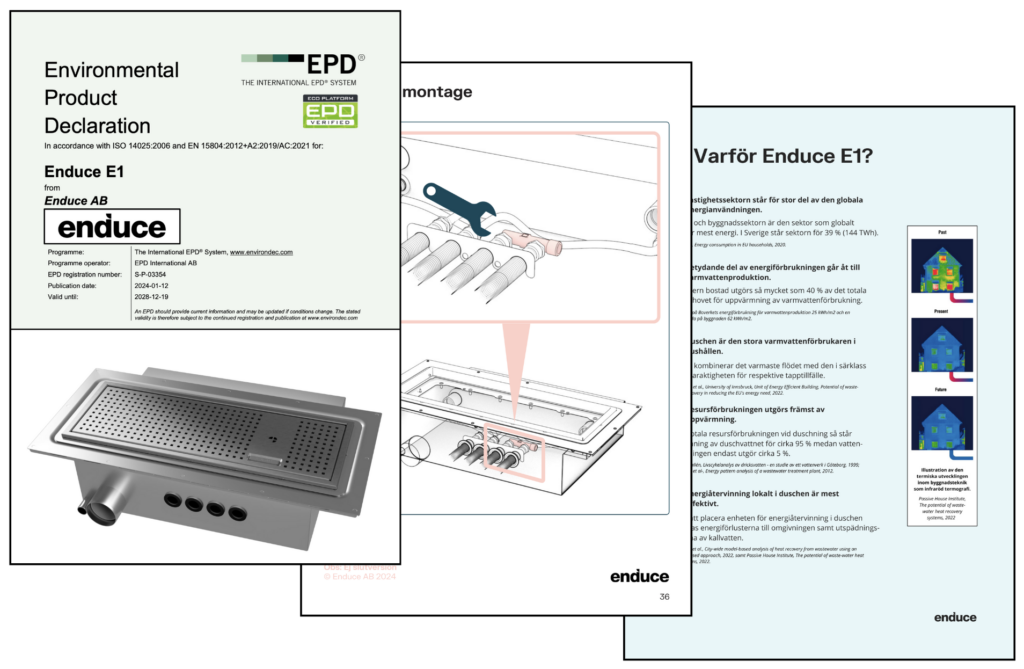
Product information
Brochure
Product presentation of Enduce E1
Product data sheet
Technical specification and product characteristics.
Instructions
Instructions for use
How to use Enduce E1.
Care instructions - short version
See the User Manual for more detailed information.
Assembly instructions
For installation in joists and internal mounting.
Waterproofing instructions
Specific information for different types of waterproofing.
Assessments & analysis
EPD - Environmental Product Declaration
Declaration of the environmental and climate impact of the product.
eBVD - Construction product declaration
Detailed information on the content and environmental characteristics of the product.
LCA - Life Cycle Assessment
Detailed analysis on the environmental and climate impact of the product.
Construction products assessment
Published on the Construction Products Assessment website.
Reports and certificates
Type approval
Enduce E1, C901108 (RISE 2025)
Waterproofing certificate
Enduce E1 / APEX, C901073 (RISE 2025)
Efficiency test report
Heat exchanger efficiency (RISE 2022)
Project support
BIM object - MagiCAD
For downloading and designing in CAD
Energy calculation - TMF Energy
Available via license at TMF/RISE
Energy calculation - IDA ICE
Available in fall 2025.
The RSK database
Product information via RSK
Dimensional sketch
Drawing with dimensions and connections
Strength calculation (Afry 2023)
For installation in concrete floors
Template for program document
Helps you to prescribe Enduce E1
Are you missing something?

079-103 56 56
Välj rätt utförande för ditt projekt
1. Flooring
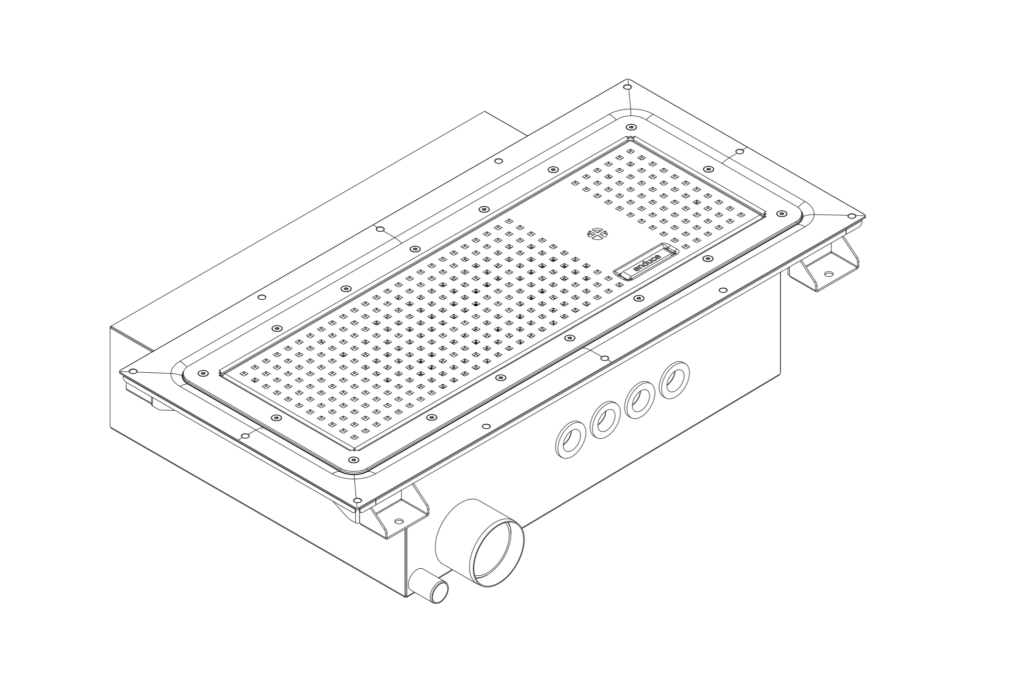
Betongbjälklag (Concrete)
Med fixing ears for fixing and leveling before embedding in joists.
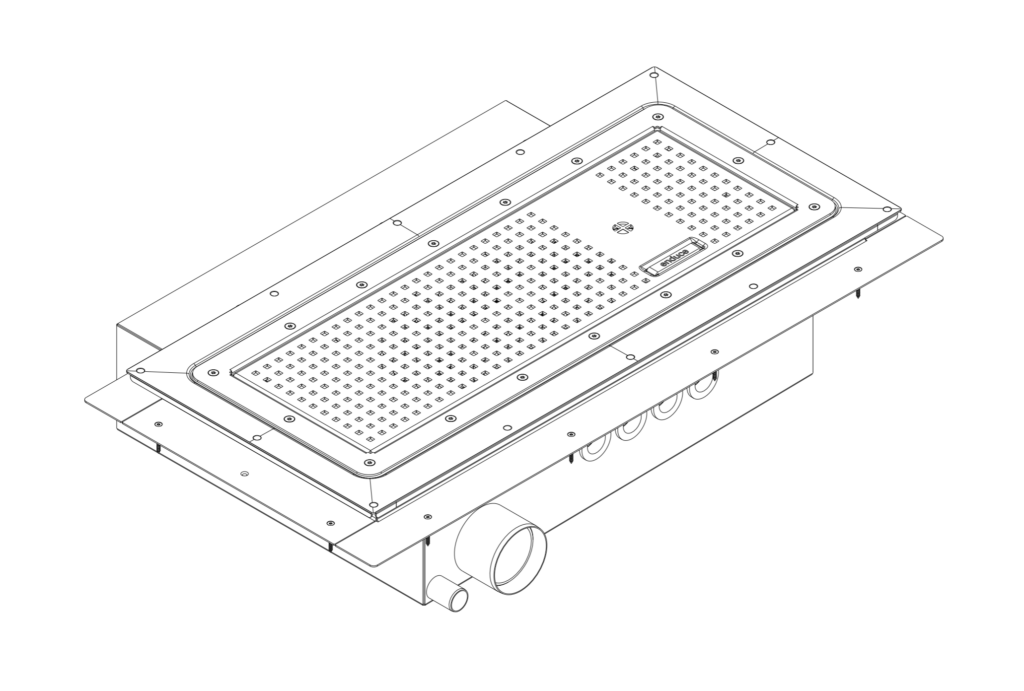
Träbjälklag (Joist system)
Med mounting frame for installation in lightweight joists (wood and sheet metal beams) with floorboards.
2. Surface layer
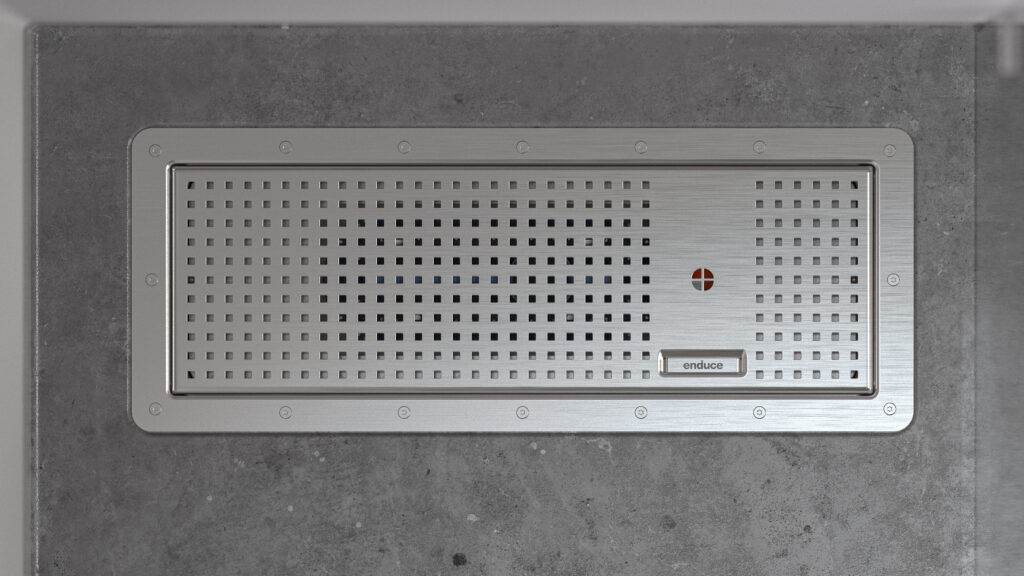
Vinylmatta (Vinyl)
Supplied with clamping frame for vinyl carpet.
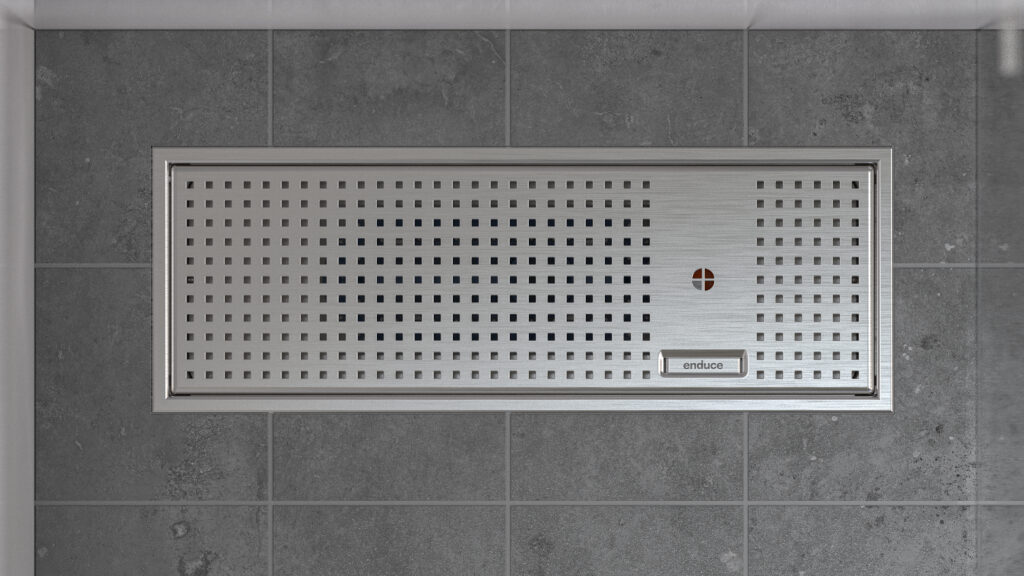
Klinkergolv (Tile)
Supplied with clinker frame, clamp frame and waterproofing sleeve.
3. connections

Anslutningar mot rummet (STD)
Anpassad för vatten- och avloppsanslutningar riktade mot badrummet (standard).
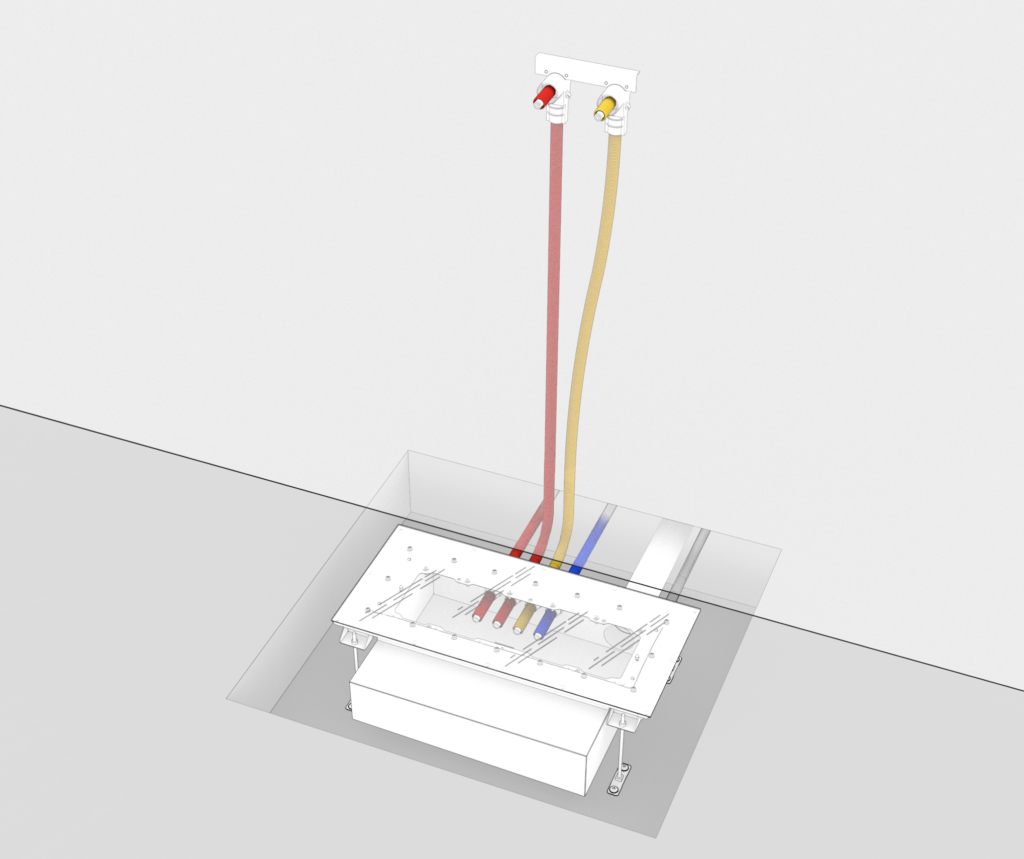
Anslutningar mot vägg (CTS)
Anpassad för vatten- och avloppsanslutningar i riktning mot vägg/schakt (close to shaft).